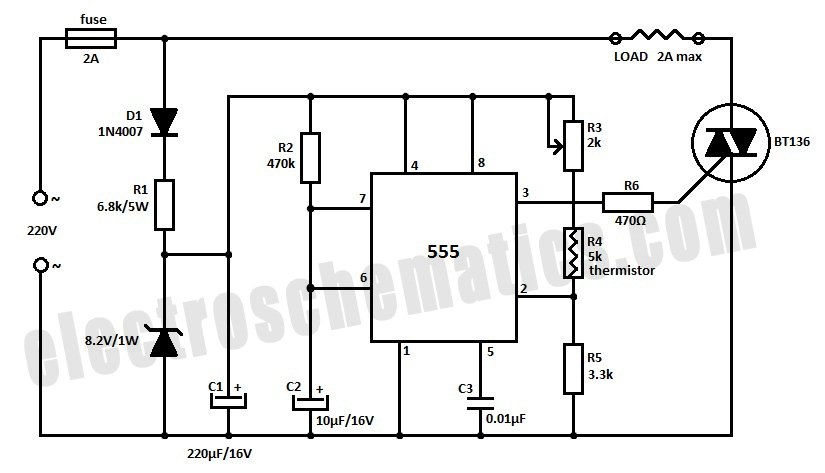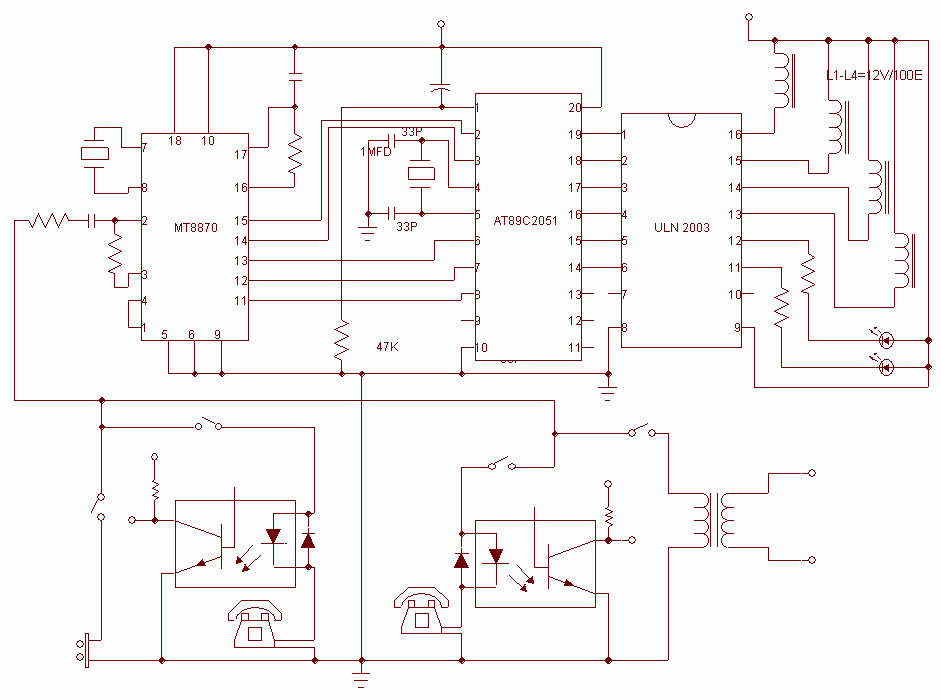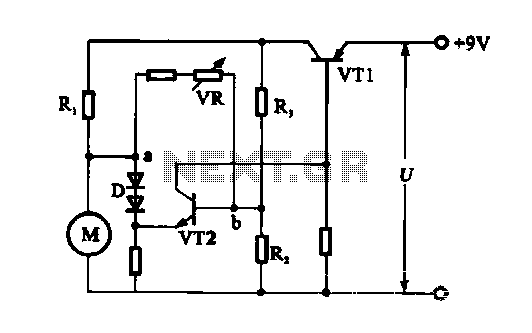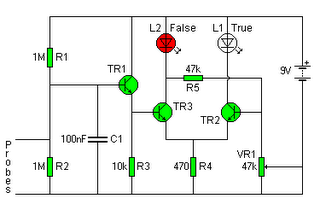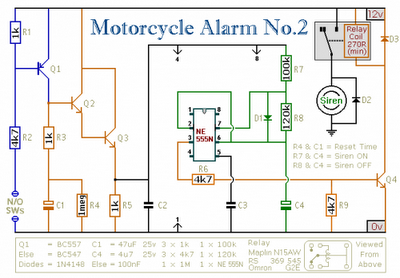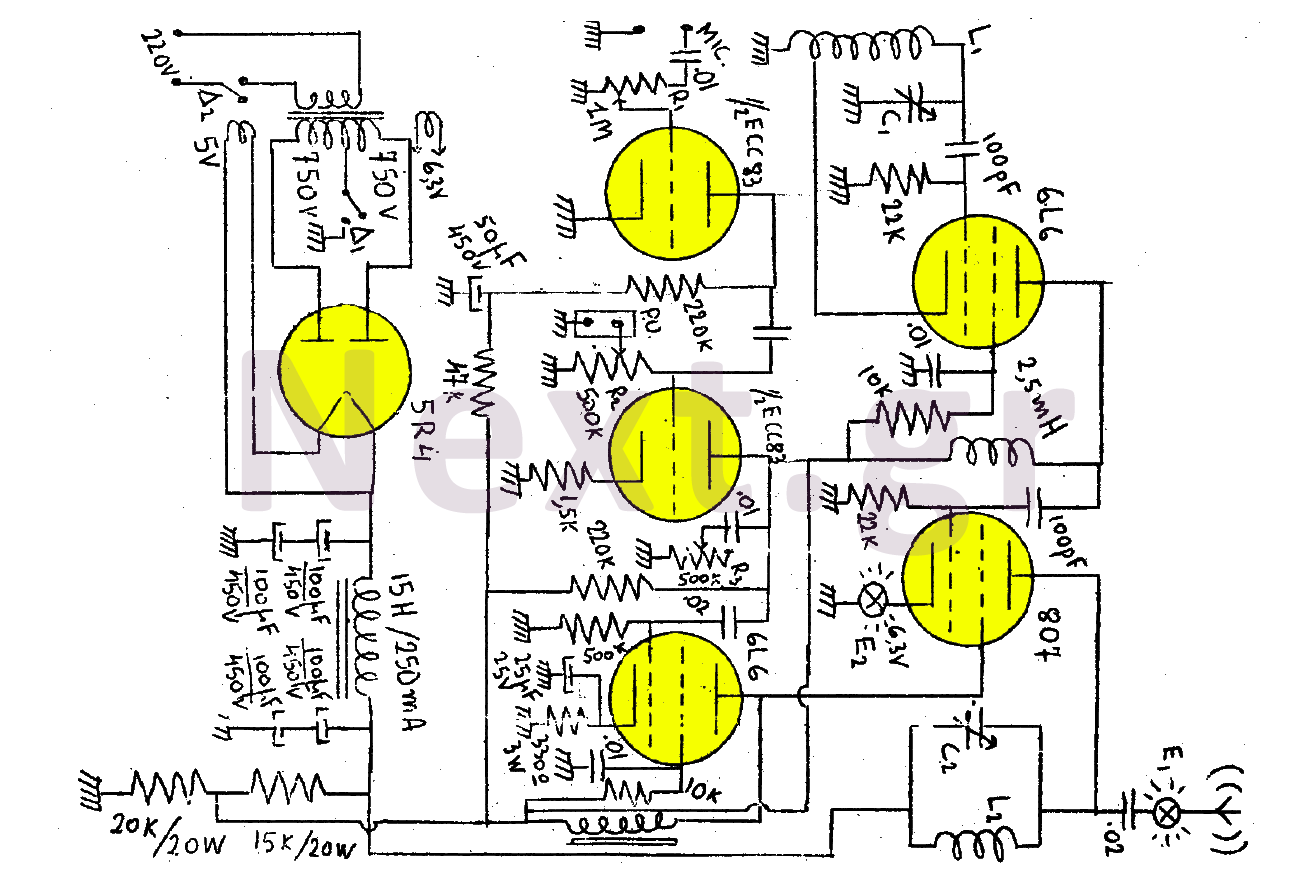
An ultrasonic transmitter circuit diagram discrete components
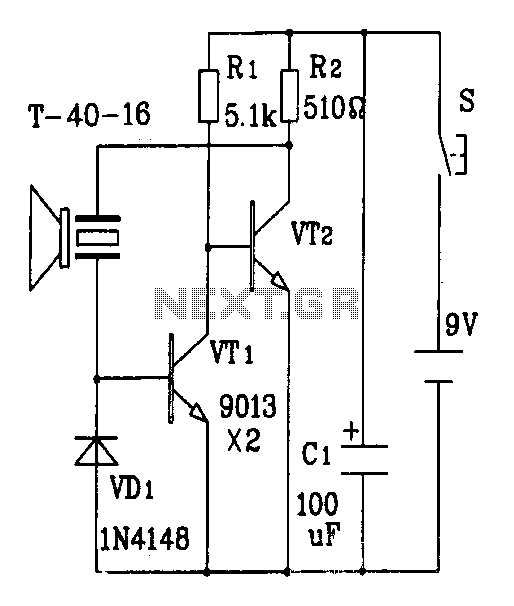
The discrete components ultrasonic transmitter circuit T/R-40-16 can emit a series of ultrasonic signals at a frequency of 40 kHz. This circuit operates at a voltage of 9V and has a current consumption of 25mA, with a control distance of up to 8 meters.
The T/R-40-16 ultrasonic transmitter circuit is designed to generate ultrasonic waves at a frequency of 40 kHz, making it suitable for various applications such as distance measurement, object detection, and proximity sensing. The circuit operates with a supply voltage of 9V, which is a common voltage level for many electronic devices, ensuring compatibility with standard power sources.
The operating current of 25mA indicates a moderate power consumption, allowing for efficient energy use while maintaining performance. The circuit's capability to control distances up to 8 meters makes it versatile for use in different environments, such as industrial automation, robotics, and consumer electronics.
The circuit typically comprises several key components, including a signal generator, an ultrasonic transducer, and a power supply circuit. The signal generator produces the necessary 40 kHz waveform, which is then fed to the ultrasonic transducer. The transducer converts the electrical signal into ultrasonic sound waves, which propagate through the air.
In practical applications, the transmitter can be paired with a corresponding ultrasonic receiver circuit to measure the time taken for the ultrasonic waves to return after hitting an object, allowing for distance calculation based on the speed of sound. This feature is particularly useful in applications such as parking sensors, level measurement systems, and obstacle detection in autonomous vehicles.
Overall, the T/R-40-16 ultrasonic transmitter circuit is a reliable and efficient solution for generating ultrasonic signals, with a well-defined operating range and power characteristics that make it suitable for various electronic projects and commercial applications.Discrete components ultrasonic transmitter circuit T/R-40-16 can emit a series of ultrasonic signal of 40kHz. This circuit voltage of 9V, operating current of 25mA, control dis tance of up to 8m.
The T/R-40-16 ultrasonic transmitter circuit is designed to generate ultrasonic waves at a frequency of 40 kHz, making it suitable for various applications such as distance measurement, object detection, and proximity sensing. The circuit operates with a supply voltage of 9V, which is a common voltage level for many electronic devices, ensuring compatibility with standard power sources.
The operating current of 25mA indicates a moderate power consumption, allowing for efficient energy use while maintaining performance. The circuit's capability to control distances up to 8 meters makes it versatile for use in different environments, such as industrial automation, robotics, and consumer electronics.
The circuit typically comprises several key components, including a signal generator, an ultrasonic transducer, and a power supply circuit. The signal generator produces the necessary 40 kHz waveform, which is then fed to the ultrasonic transducer. The transducer converts the electrical signal into ultrasonic sound waves, which propagate through the air.
In practical applications, the transmitter can be paired with a corresponding ultrasonic receiver circuit to measure the time taken for the ultrasonic waves to return after hitting an object, allowing for distance calculation based on the speed of sound. This feature is particularly useful in applications such as parking sensors, level measurement systems, and obstacle detection in autonomous vehicles.
Overall, the T/R-40-16 ultrasonic transmitter circuit is a reliable and efficient solution for generating ultrasonic signals, with a well-defined operating range and power characteristics that make it suitable for various electronic projects and commercial applications.Discrete components ultrasonic transmitter circuit T/R-40-16 can emit a series of ultrasonic signal of 40kHz. This circuit voltage of 9V, operating current of 25mA, control dis tance of up to 8m.
